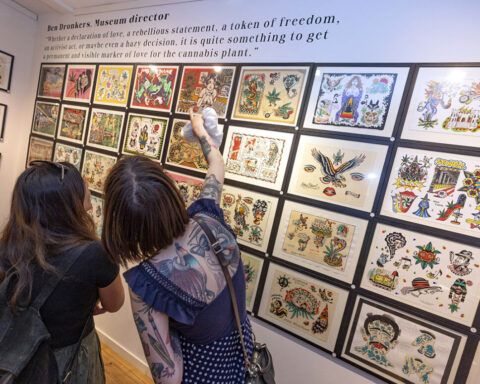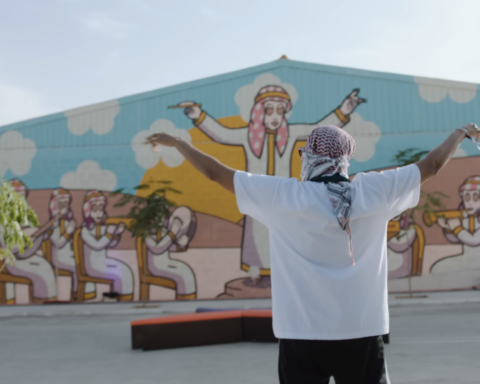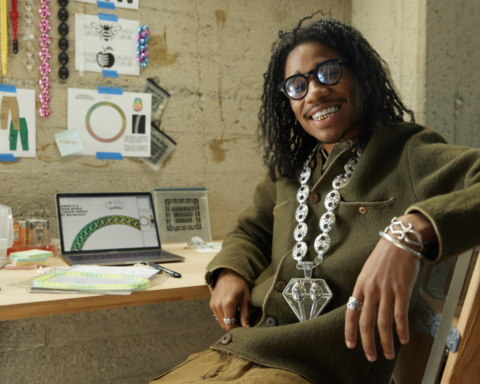Hajichi, the almost lost art of minimalist tattoos worn by Okinawan women on their fingers and hands, has inspired twenty-to-year-old Hana Morita.
The once typical tattoo style of subtropical islands has now nearly perished over a century of assimilation. The symbols and designs of the tattoos tell a story and explain the culture of generations of young AND old women.
Morita often visited her grandmother in Okinawan growing up, as she lived in the united states. She took it upon herself to learn more about her family’s roots and about the culture of Okinawan, doing that, she began researching hajichi. “I wanted it to mark the physical affirmation of becoming more of myself,” Morita, said. “My grandma was really happy to see it because her grandma also had hajichi.”
She and a group of young women on social media come together to bring hajichi its comeback and try to bring it into the world of modern tattooing. Among many, I first heard of hajichi and its unique simplicity through Instagram. While the style of art looks aesthetic and is pleasant to share on one’s pages, these young women are participating in more than just that. They strive toward the larger movement to maintain the individualism of Okinawa and show it is so much more than its standing as a resort destination that hosts American military bases.

Before being annexed by Japan in 1879 – and then occupied by the United States for almost 30 years after World War II – Okinawa was the independent Ryukyu kingdom. 2022 honors the 50th year anniversary of Okinawa’s return to Japan from U.S. rule. However, Okinawans voice they are treated as second-class citizens in Japan despite shouldering the load of the U.S. military presence.
Hajichi was banned in 1899 as the Japanese government pushed for assimilation and as new standards of decency for society began to emerge as the nation began to open up to outsiders after more than 200 years of isolationist practices. Even while tattoos are becoming increasingly popular among young Japanese people, they are nonetheless stigmatized and frequently linked to the yakuza, a Japanese criminal organization.
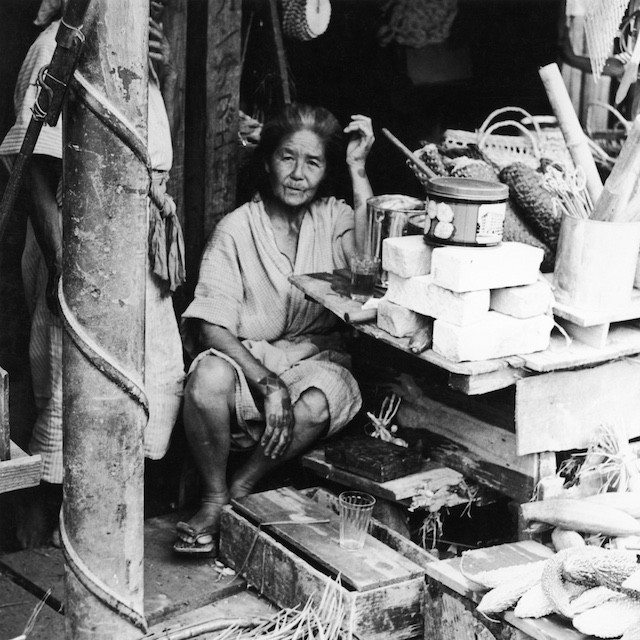
Now, attempts by a group of tattoo artists in Okinawa and Tokyo to restore hajichi have reached artists and clients in diasporic residents in Brazil and Hawaii. Some consider the resurrection as a callback to a time when Okinawan women held strong roles as religious leaders and dominant breadwinners. It’s a symbol of empowerment in a country that rates among the lower developed countries on women’s progression.
“Hajichi is also a part of this idea that women possess power. And living in a patriarchal society like Japan, I think that’s part of why I was drawn to hajichi,” said Moeko Heshiki, 30, founder of the Hajichi Project. “Even in the tattoo industry, a lot of tattoo artists tend to be men. But hajichi was usually done by women for women, so this felt especially meaningful.”
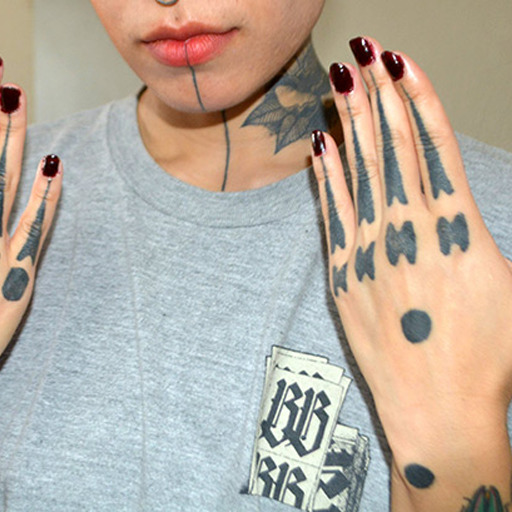
Being raised in Tochigi, north of Tokyo, Heshiki encountered microaggressions linked to her Okinawan dependence. “You’re light-skinned for an Okinawan,” people would nag and point out how her name doesn’t sound like a traditional Japanese name. (It’s Okinawan.) But being Okinawan was essential for her.

As she looked for a tattoo design that portrayed her family, she came across hajichi on Pinterest. She got her first hajichi from a tribal tattoo artist in Tokyo, then in 2020 opened her own studios in Tokyo and Okinawa. Tattoo artists in Okinawa now do hajichi, but Heshiki is the exclusive hajichi specialist — “hajicha” — on the islands.
Hajichi’s roots are dark and date as far back as the 16th century, according to researchers. It was a symbol of the dignity of femininity, beauty, and security from evil spirits. It could also symbolize marriage. Young women usually got hajichi through numerous sessions as a ritual of progression via various phases of life, according to “Hajichi of Nakijin, A Vanishing Custom,” a 1983 research paper. Islands in Ryukyu each had their own designs and traditions.
Heshiki attempts to adhere to authentic techniques as closely as possible, hand-poking with bamboo needles and referencing designs in history books from secondhand bookstores and fabric from various regions. She makes certain her clients are of Okinawan origin before she gives them tattoos in the traditional areas of fingers, hands, and wrists. Numerous are young, mixed-race women who find her through social media. For those attracted to it for aesthetic reasons, she tattoos them on other regions of the body to maintain the hand-worn tattoo for women of Okinawan roots.

The revival has led women to recent findings about Okinawa before Japanese or U.S. rule. For instance, when Heshiki revealed her hajichi to her father, who was born in Okinawa under U.S. occupation, it initiated recollections of his grandmother, who Heshiki discovered also had the tattoo and spoke a different lingo that vanished after the annexation.
And they desire to hand it down. Akemi Matsuzaki, a 32-year-old Okinawan resident, instructs hip-hop dance and is often questioned about her hajichi by her pupils, which directs to discussions around Okinawan Indigenous culture. Matsuzaki, whose grandfather is American, obtained her first hajichi this year and intends to construct a complete design on both hands. When she turns 37, a landmark period in Okinawa, she intends on acquiring a unique design to celebrate the year.

“When I got it done, it just felt so great and it just all felt so natural to me,” she said. “Though I was born in Okinawa and am working here, getting hajichi made me feel even more strongly of the fact that I really am here, and I feel more comfortable and proud of who I am.”
Still, hajichi is irregular. Getting a tattoo, particularly on an uncovered body region like the hands, is a significant burden that could be harmful to a professional view.
For those ladies, Minami Shimoji, a 30-year-old occupational therapist in Okinawa, suggests a resort: temporary hajichi manipulating fruit-based ink that was utilized for Amazonian tribal tattoos. Shimoji discovered hajichi when she noticed an elderly patient who carried a marking on her hand. Shimoji had been raised performing Okinawan dances and desired to understand more. She desires to be a full-time tattoo artist, but currently operates a studio part-time out of a flat building in Chatan, near a U.S. military base.
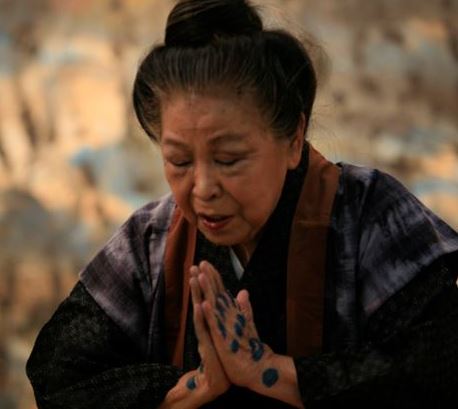
As military airplanes wailed by, flooding out the music in her studio, she scrolled through the thousands of comments on a TikTok video she made about hajichi. She’s mindful of pushback from traditionalists who don’t support her transformation of hajichi into body art that remains just two weeks. But even during the Ryukyu era, hajichi had grown, she said.
“Hajichi originally had different designs depending on region or class, so it was never just this one form,” she said. “I feel that culture is never static and it’s something that is created together by people, and hajichi can evolve while respecting the traditional aspects.”



